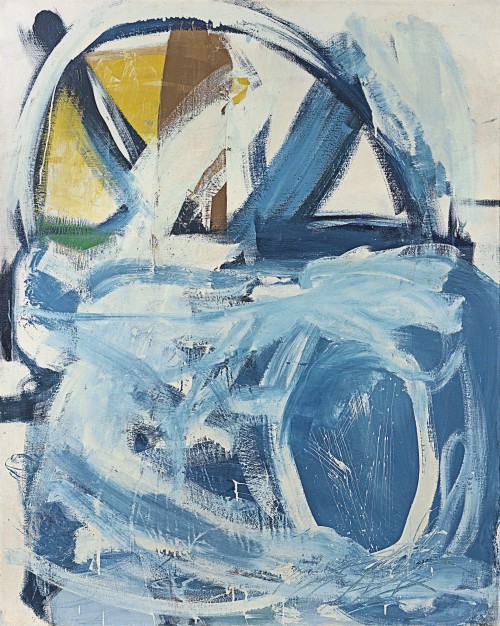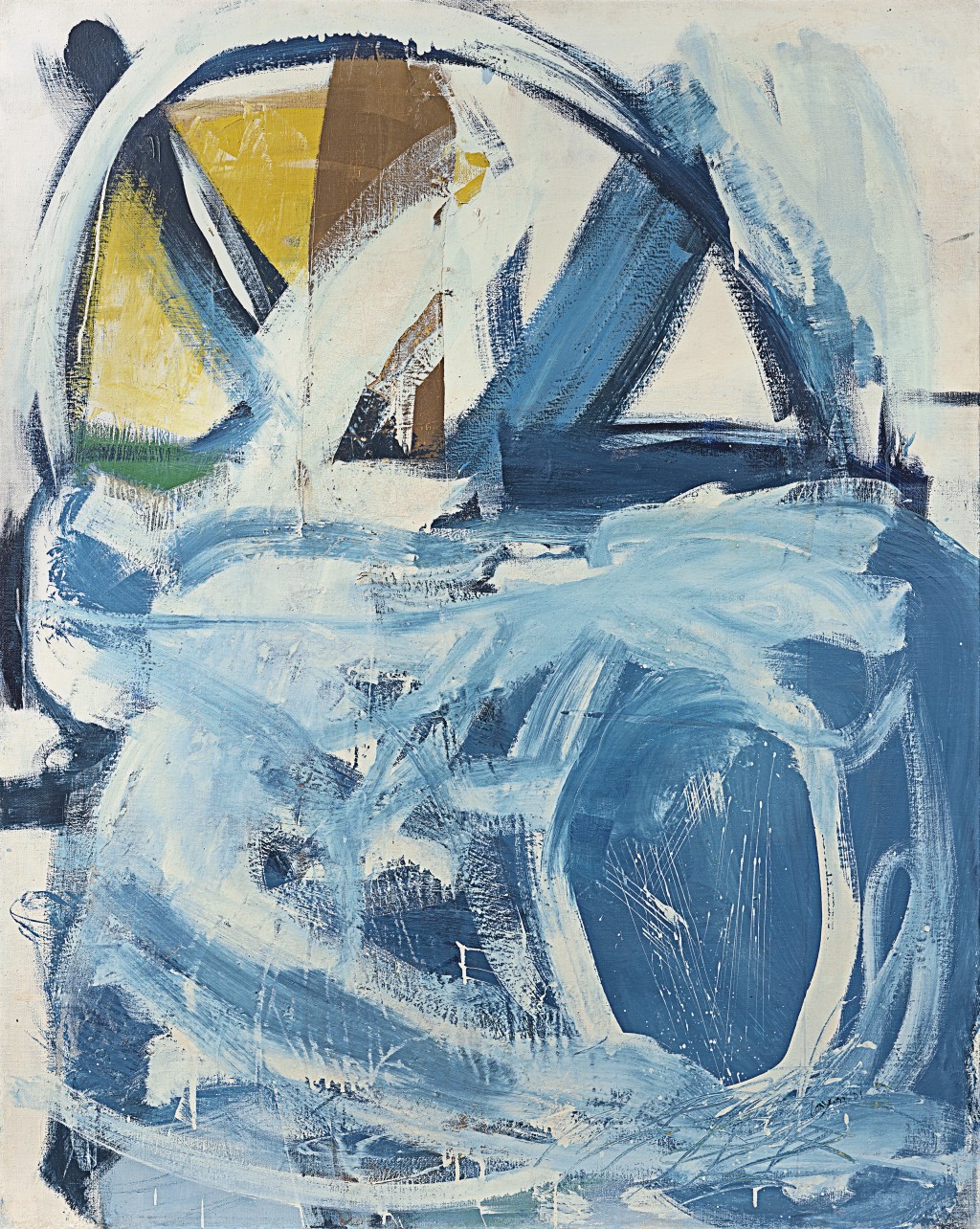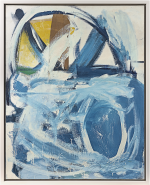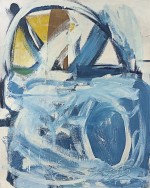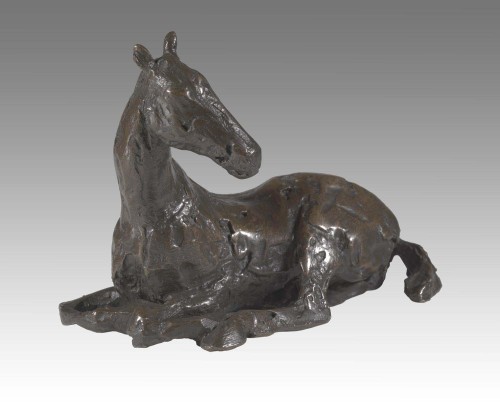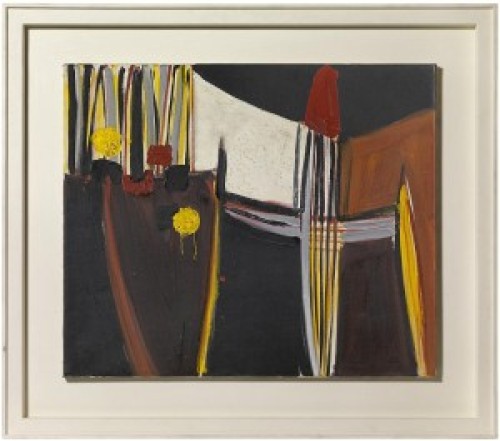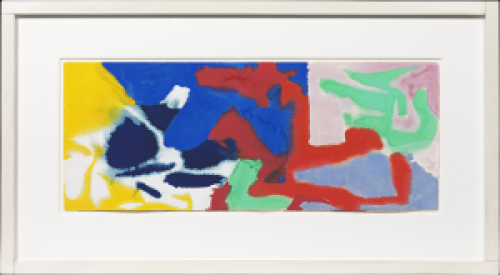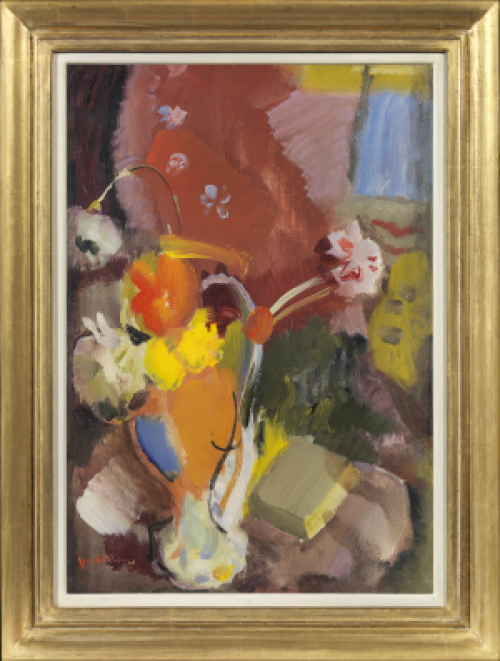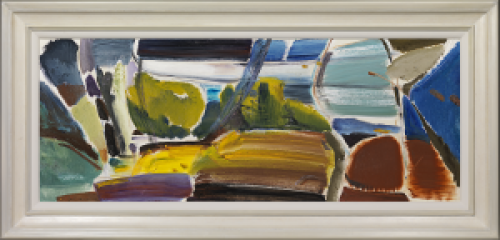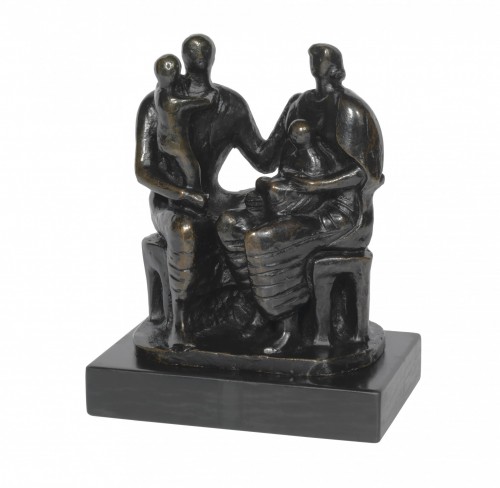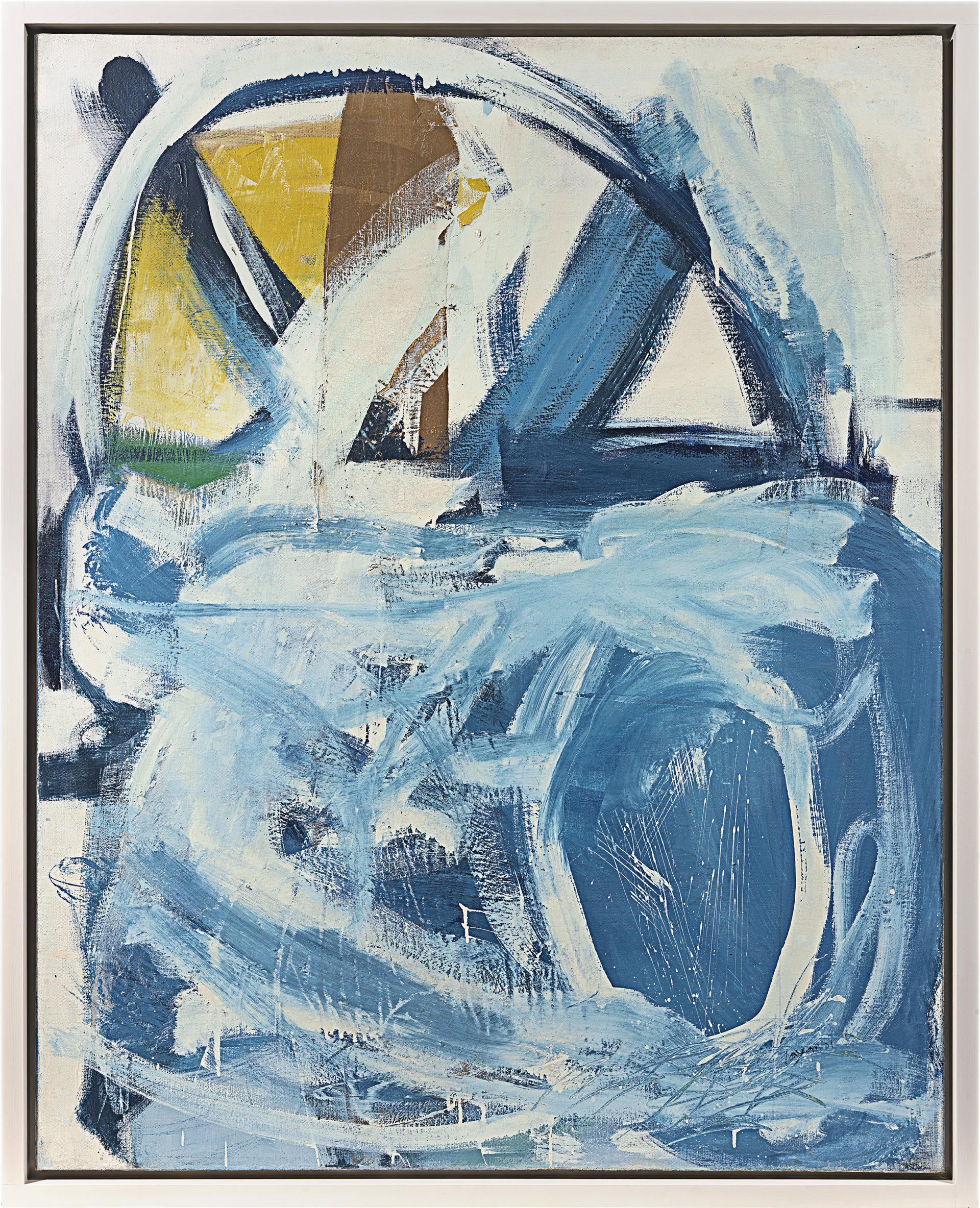PETER LANYON
St Ives 1918 - 1964 Taunton
Ref: CB 216
Sea Going
Signed and dated lower right: Lanyon 61; Signed, dated and inscribed on the reverse: SEA GOING / Lanyon Nov. 61
Oil on canvas: 60 x 48 in / 152.4 x 121.9 cm
Frame size: 63 ½ x 51 ½ in / 161.3 x 130.8 cm
In a white, waxed tray frame
Provenance
Gimpel Fils, London, 1962
Timothy Taylor Gallery, London;
Mason Phelps, 2002;
Hazlitt Holland-Hibbert, London, 2009;
private collection, 2009
Christie’s London, 10 July 2013, lot 10;
private collection, London
Exhibited
London, Gimpel Fils, Recent Paintings by Peter Lanyon, October 1962, no.4, illus. in colour
London, Arts Council of Great Britain, Tate, Peter Lanyon, 30th May-30th June 1968, no.72
Birmingham, Ikon Gallery, Peter Lanyon: later work, 16th September-14th October 1978
London, Gimpel Fils, Peter Lanyon, Works 1946-1964, 1983, no.7
London, Gimpel Fils, Peter Lanyon: Selected Works 1952-1964, 27th October-21st November 1987, no.8
London, Gimpel Fils, Group Exhibition, 1995
Literature
Anon., ‘Recent Paintings by Mr Peter Lanyon’, The Times, 15th October 1962
Jane Stockwood, ‘Art: Peter Lanyon, Gimpel Fils Gallery’, Queen, vol. 221, no. 5498, October 1962, p.27
Andrew Causey, Peter Lanyon, Aidan Ellis Publishing, Oxfordshire 1971, p.64, no.169
Rachel Kirby, ‘Peter Lanyon at Gimpel Fils’, Artscribe, no. 44, December 1983, p.66
Toby Treves, Peter Lanyon Catalogue Raisonné of the Oil Paintings and Three-Dimensional Works, Modern Art Press, London, 2018, no.501, illus. p.525
Rachel Kirby describes this exceptional work as a gliding painting, celebrating Lanyon’s flights over the coastline: ‘In Sea Going the continuous horseshoe of blue-white around the top half becomes the glider’s passage over the ‘land’ before plunging back over the ‘sea’, partially clouded by the long rhythmical white trails but intensely clear in one place, and as if far below. The brush stokes represent the distinction between movement and sudden stillness, and cloud, land and void simultaneously. Style and subject are inextricably bound. And the order in which the colours are laid over each other becomes a powerful means of creating a notional space from an aerial viewpoint.’[1]
Lanyon began flight training at Perranporth Airfield on the north coast of Cornwall in 1959 and completed his first solo flight in a glider in June 1960. The artist wrote to Martin Butlin at the Tate in 1960, ‘I have discovered since I began gliding that the activity is more sensual than I had guessed. The air is a very definite world of activity as complex and demanding as the sea…the thermal itself is a current of hot air rising and eventually condensing into cloud. It is invisible and can only be apprehended by an instrument such as the glider.’[2]
Lanyon had always sought to go beyond the static panorama and single viewpoint of traditional landscape, seeking to represent a more complete and complex experience of his native West Cornwall environment. In exceptional mature works, such as Sea Going, Lanyon elevates the genre by suggesting not only a specific place or situation experienced dynamically, but also the process of making the image over time. To this the artist added a biographical or emotional dimension, as Toby Treves explains: ‘Lanyon, whose mature art was more aligned with a tradition of personal disclosure, the territory of the flight and the air was experienced as an echo of the self’, he ‘discovered that a thermal or a flight might be a metaphor for the experiences of life, that the encounter of rough and calm air could be related to the physical and emotional encounter of two people.’[3]
On 2nd September 1961, Lanyon was elected Bard of Cornish Gorsedd for his services to Cornish Art. His bardic name was Marghak an Gwyns (Rider of the Wind).
[1] Rachel Kirby, ‘Peter Lanyon at Gimpel Fils’, Artscribe, no.44, December 1983, p.66.
[2] Peter Lanyon to Martin Butlin at the Tate, 28th November 1960, see Tate.org.uk
[3] Toby Treves and Barnaby Wright, op. cit., p.58.

